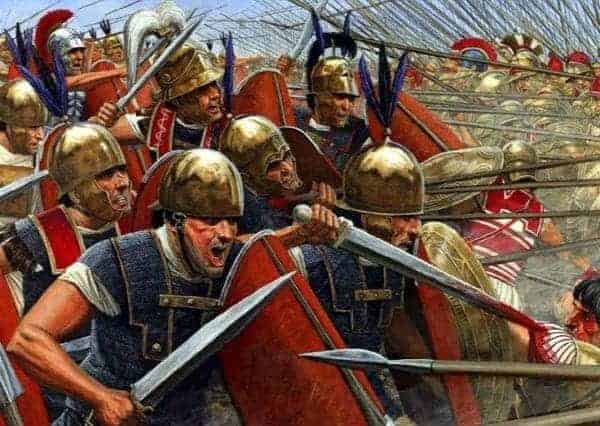According to tradition, Rome was founded by Romulus in 753 BC, although excavations have revealed that a wall was built in the area of the city centuries before the official year of foundation. Modern historians suggest the city was founded a little later but regardless of when it was established, Rome was to become the greatest city in ancient history.
Legend has it that seven kings ruled the city until the Roman Republic was formed in 509 BC when the people took power from Lucius Tarquinius Superbus. From that point onward, Rome started to expand into other regions and ultimately formed one of the greatest empires of all time. Much is written about Roman conquest from the Second Punic War onwards, but less is known about its early history. In this article, I will look at 7 important battles in the early Roman Republic which end just before the Second Punic War. As I covered the Pyrrhic War in another piece, I have not included the battles of Heraclea and Asculum.

1 – Battle of Silvia Arsia (509 BC)
The Battle of Silvia Arsia was fought between the Etruscan forces of the Tarquinii and Veii and the republican forces of ancient Rome. It was the first failed attempt by Tarquin to regain the throne after he was overthrown in 509 BC. Also known as Tarquin the Proud, the former king ruled as a tyrant, and his actions angered Romans to the point where they decided to abolish the monarchy and form a Republic.
According to legend, one of Tarquin’s sons, Sextus, raped Lucretia, the daughter of the prefect of Rome. After the event, she told her father before committing suicide. The Roman people were so angered by the king’s abuse of power that they declared it was better to die in defense of their liberty than to allow tyrants to rule. One of the city’s leading citizens, Brutus, proposed the banishment of the Tarquins from all the territories of Rome. A general election was held, and the people voted for a republic. Brutus took armed men to find the king, but Tarquin fled with his family into exile.
However, he wanted his throne back and gained the support of the Etruscan cities of Veii and Tarquinii by reminding them of their territorial losses at the hands of the Roman state. He led his army against the Republican forces commanded by Brutus and Publius Valerius Publicola at the Silvia Arsia, which was a forest near the city of Rome. Tarquin’s son Aruns led the monarchy’s cavalry and charged at the enemy cavalry, led by Brutus. The two men apparently speared one another to death.
Although the right wing of both armies found success, Tarquin was forced to flee the field. Valerius returned to Rome and was given a hero’s welcome. The city also held a magnificent funeral for the fallen Brutus. According to Livy, Valerius fought the Veii soon after Silvia Arsia but does not give details of what happened. Tarquin had failed in his initial attempt to reclaim his crown, and this battle marked the beginning of the Roman Republic. However, the deposed king was not finished yet.

